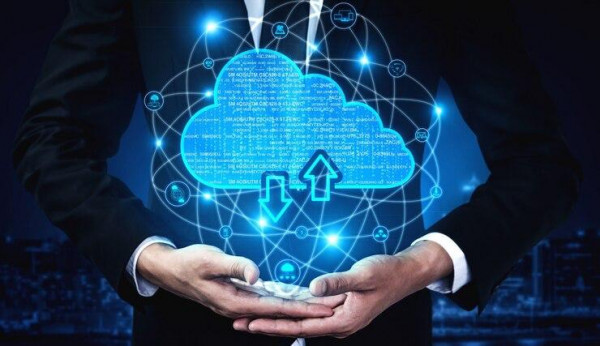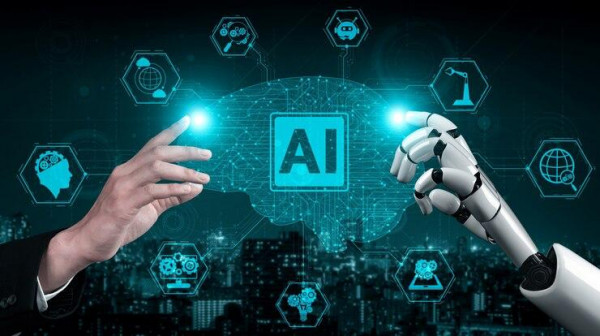Many mature sectors are being significantly disrupted by technology. Electric vehicles or self-driving cars with automotive software are disrupting the automobile business, just as the Internet of Things and smart appliances are disrupting home appliances, and on-demand content providers are disrupting home entertainment. Leaders in all industries, especially in automotive manufacturing, should undoubtedly keep a close eye on such developments.
Trends in the Automotive Industry
The rivalry between technology and automobile businesses is reaching unprecedented heights. For example, in 2016, General Motors paid $1 billion for Cruise Automation, a self-driving automotive tech start-up, and announced that it would collaborate with Lyft to test self-driving taxis. Similarly, in March 2022, Sony announced well-planned cooperation with Honda Motors to develop automotive digital transformation high-value battery-electric vehicles that will likely hit the road by 2025. Furthermore, smartphone behemoth Xiaomi announced its entry into the smart EV market in March 2021.
Currently, an average car contains roughly 90% hardware and 10% car software.
However, according to industry predictions, hardware’s portion will fall to 40%, with the remainder divided between software (about 40%) and content (around 20%) in the future. Automotive experts feel that collaborations will be critical as automakers struggle to maintain their growth in this disruptive era. Let’s talk about how the car sector can shift from 90% automobile hardware to 40% hardware.
A shift in Consumer Behavior
The internet and social media emerged during the digital era, which empowered the informed consumer.
As automotive digital transformation progresses, a significant shift in customer behavior will transform the industry’s revenue model and value chain. Current and prospective car owners desire to explore and customize their vehicles using immersive technology such as virtual and artificial reality. Premium brands must do more than keep up with industry-wide attempts to create such experiences; they must lead them or risk losing a fundamental component of their brand’s cachet.
With increased connection, the automotive industry will continuously record and quickly analyze enormous amounts of data on driving behavior, road conditions, and other variables to anticipate and fine-tune car service.
Consumer expectations and behaviors will continue to alter as the digital transformation in the automotive industry develops and evolves. It is more crucial than ever to stay current and ahead of the competition.
Time spent in vehicles
The first significant change related to the automotive industry is the time spent in vehicles while driving. Of course, people already spend a lot of time in their cars: According to AAA Foundation estimations, US drivers spend more than 290 hours every year driving around, which equates to approximately 6-7 hours per licensed driver per week. But with the introduction of autonomous vehicles, the number is likely to reduce significantly over time. The logic is simple: as car technology transforms into self-driving vehicles with 40% hardware, people will have more time to perform other tasks while traveling. According to AT Kearney’s estimation, self-driving technology can offer up to 1.9 trillion minutes of free time for passengers by the end of 2030.
Growth of Mobility-As-A-Service
The other fundamental change in consumer behavior due to autonomous vehicles is the growth of mobility-as-a-service. It refers to a shift from personally-owned vehicles to using mobility solutions on-demand. Over the years, car ownership has moved from a status symbol to a utility-driven one. Self-driven vehicles will accelerate this trend further.
Changing Trends in Car Ownership
How people view cars is changing as automotive technology grows; therefore, companies and firms are more in demand. Even those who want their own vehicle increasingly gravitate toward leasing rather than buying a car outright as transportation shifts from a lifestyle accessory to a utility and necessity.
Urbanization is accelerating this change from ownership to usage. For instance, many people don’t feel the need to travel and invest in the luxury of their own vehicle when they can take a cab.
A New Value Chain
We are probably going to see the automotive industry evolve from an OEM-led value chain toward a “technology stack” that in numerous ways mimics what we have seen happening in the computer industry. The automotive industry will be divided into three categories.
- Hardware Companies: Producing physical components of the vehicles
- Software Companies: Providing intelligence car software to run vehicles and also building connectivity and fleet management functionality
- Applications: This will leverage both hardware and software to offer customers the best service and experience
According to Morgan Stanley’s estimation, the software and application layers in combination will account for 60% of the value chain, and the rest will be the hardware supply, significantly reduced from 90% to 40%. Hence, hardware suppliers must adapt to this challenge and evolve accordingly. As per strategy and estimation, the revenue share of hardware companies will deteriorate, and their share of industry profits will decline even more substantially.
How to Turn Around the Future
As there is a big chance of long-term decline with respect to hardware revenue share, the OEMs will try to enter the software and applications layer and continue to stay relevant in the era of self-driving car technology. Here are a few considerations.
- Work in partnership with all technology companies developing OS solutions to make sure that the hardware or software used in automobile industry integration is done as smoothly as possible.
- Go for both hardware optimization and application development simultaneously.
- Choose the right talent to make the transition from 90% hardware to 40% hardware in a smooth way.
Future Business Possibilities
The automotive industry will play a significant role in how businesses, large and small, move forward, particularly in digital development, IT infrastructure modernization, and data exploitation.
Organizations that completely embrace this technology provide their employees with a rewarding and exciting work environment.
Automotive technology will produce new roles in the future and teach their staff about various technological components such as machine learning, deep learning, and artificial intelligence.
It will alter businesses while also contributing to economic prosperity. It will also stimulate innovation and provide an exceptional consumer experience. Customers will receive high-value services as a result of firms operating efficiently. The new technology will let corporations and their business partners collaborate more quickly.
Conclusion
The transition from 90% hardware to 40% hardware in the automotive software industry will happen somewhere down the line; hence, all involved parties must be ready to embrace it and look for strategies to sustain their growth.
FAQs
1. Is cost a major driver for hardware in the automotive industry?
About 47% of the price of a car is made up of raw components. An automobile is typically made up of 47% steel, 8% iron, 8% plastic, 7% aluminum, and 3% glass. The remaining 27% are other materials.
Steel accounts for about 22% of an automaker’s operating expenses. Therefore, any variation in the price of steel worldwide directly affects profitability. Historically, only the cylinder blocks, wheels, and other engine components were made of aluminum by the auto industry. The price of aluminum is two times that of steel. However, in response to stricter fuel economy rules, this tendency is changing.
Labor is the second-largest cost component for automakers after raw materials. It is also the most divisive.
What is the future of automotive software?
The automotive industry has generally lagged in software development compared to other industries. While software engineering remains complex, the industry will begin to adopt new technologies like IoT in automotive at a faster rate as more traditional automakers join forces with tech companies.
- Interconnectivity between automobiles and other devices (i.e., smartphones)
- Analytics will be an essential element of the auto software development process, from anticipating when parts will break to giving technical support while on the road.
- Car manufacturers will start to generate more money from services (car as a service) rather than products (car ownership).
As self-driving automobiles, linked vehicles, and even electric vehicles become more common, automotive software developers will be needed to create better driving experiences.
How is AI changing the automotive industry?
Automotive technology is concentrating increasingly on AI in the automotive industry that can help automobiles with sophisticated safety measures and support drivers without taking the wheel. Some less important AI-powered features are automatic braking, collision avoidance systems, alerts for pedestrians and cyclists, cross-traffic alerts, and intelligent cruise controls.
With new cars emerging with big data-enhanced geo-analytical capabilities, connection applications, and smart sensors, its automotive industry software features include centralized networking, quick processing speed, and data access and analytics. The cloud-based platform can aid automakers in developing cutting-edge technologies as they seek to produce cutting-edge products.
How can the industry strategize for the transition of hardware?
Whether your organization is looking to enter a complementary software industry, enhance your hardware goods with managed services, or respond to the virtualization trend, here are four critical measures to overcome common issues faced by hardware companies from the impact of digital transformation on the automotive industry.
- Step 1: Align Your Management Team on Goals, Budgets, and Timing
- Step 2: Create Software and Service Offers, Making Tough Decisions Where Necessary
- Step 3: Develop a Hybrid Operating Model that Balances Old and New
- Step 4: Go above and above to assist customers with migration and support those who are still awaiting assistance
What are some of the challenges faced by the automotive industry?
The automotive industry is advancing quickly toward the future. The four key factors that are now influencing its development are electrification, shared mobility, autonomous vehicles, and connectivity. All of them transform a vehicle into a mobile computer, requiring the addition of several functions and the installation of the necessary software. As a result, the automobile industry faces a variety of difficulties, including growing competitiveness, frequent changes brought on by rapid advancement, forming alliances with software firms, and other associated problems. In addition, there is a lot of uncertainty surrounding the availability of the resources that automobile manufacturers need (such as the worldwide chip shortage), and the drive to lower production costs compounds the aforementioned issues.



